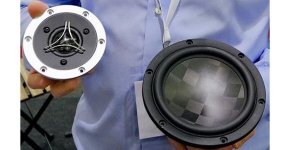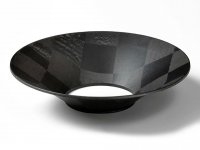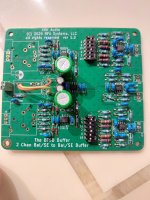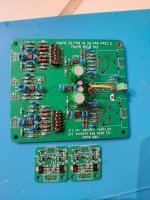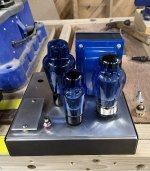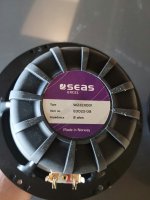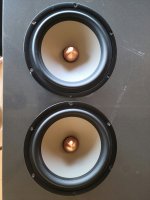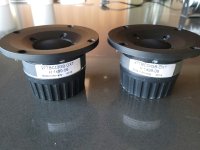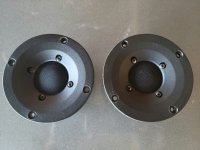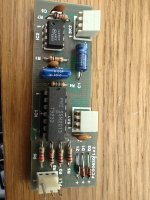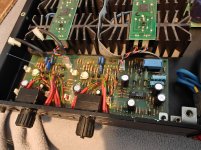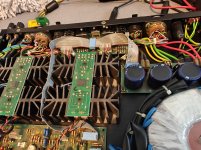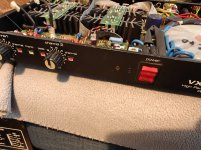Which 10" woofer for 3-way studio monitor?
This is a project to design & build a high performance 3-way studio monitor with active amp & DSP. F3 target is below 40 Hz, peak volume at that frequency ~105 dB/m. Target crossover is 3~400 Hz. Lower would be nice but not sure if the mid dome can reach down that low.
I have three 10" woofer pairs on hand to consider. Can you help me choose one?
Here are key properties. Fs & Qts were measured; the rest are published.
*Converted from Parts Express USD price per piece in 100 unit min purchase.
My preferred bass loading is closed box rather than ported, likely due to the increased group delay of the latter. Closed boxes are also simpler to build and Vb less critical. However, many high end studio monitors are ported so it appears my preference is unfounded, perhaps having heard too many poorly designed ported speakers over the years. So I remain cautiously open to both ported & sealed designs.
Vifa/Peerless Tymphany NE265W-8 ticks a lot of boxes: Based on WinISD calculations, a 32 liter box ported to 29.4 Hz provides F3 of 35 Hz. Looking at sensitivity, based on RMS power, this should provide 102 dB@1m max at 35 Hz -- or 105 dB at the peak of 250W (assuming no power compression). A sealed box of the same 32 liters pushes Fs to 57 Hz; this is far worse for bass output, and doesn’t match the ported box till 20 Hz at -15.5 dB. The 32 liter box calculated doesn’t include the port volume or driver displacement, which might be as much as 2-3 liters. This combined with a sealed mid chamber might push external dimensions to 40+ liters. The extremely low weight due to the NE265’s neodymium magnet is a plus, along with the advanced frame design, which appears to have inspired Satori bass/mid drivers. However, one serious caveat is that this driver is virtually unobtanium for DIYers due to the 100pc min order imposed by Tymphany these days; I might not be able to make more than 1 pair, which could be a problem.
Dayton Audio RSS265HF-8 is designated as a subwoofer. A 47l box provides Q=0.707 and F3=38Hz, which seems excellent for a sealed box of this size. Reducing box size to 40l provides Q=0.73 & F3 of 39 Hz. I generally prefer the sound of sealed woofers over ported ones, so the 40l box size is OK, and PEQ with the planned Hypex FA253 plate amp could provide even deeper bass performance or equal bass performance in a smaller box. Using the 250W maximum power output of the Hypex FA253, I calculate max SPL at 39Hz in the 40l sealed box to be ~106 dB@1m. The 14.3mm Xmax (if that means ∓14.3mm) promises good responsiveness to bass EQ, too. The high 7.7kg mass, 3X that of the NE265, is the only real downside -- and the fact that it’s a sub driver suggests FR above 100Hz may not be ideal, though factory specs don’t show anything untoward to 500Hz.
An SB Acoustics SB29NRX75-8 isn’t exactly on my shelf, but four of them are used in my LX521-inspired OB 4-way dipoles. A pair could be pulled for development purposes -- and Solen also delivers these pretty fast. A 53l box with SB3 alignment provides F3 = 32 Hz. Good, but the box is a bit too big. Reducing box size to 40l gives F3= 37.5Hz, slighter lower than the Dayton in the same box. Accepting 200W as the power limit, maximum SPL at 37.5 Hz should be ~108 dB, assisted by the higher 88 dB/2.83V sensitivity. One downside of this woofer is its oversize frame (290mm diameter vs ~265mm for the others), which dictates a wider baffle, likely >310mm, whether or not this is needed for the mid + tweeter.
I have three 10" woofer pairs on hand to consider. Can you help me choose one?
Here are key properties. Fs & Qts were measured; the rest are published.
| Woofer | Fs | Qts | Vas | dB/W | RMS MAX | Xmax | Weight | CAD |
| Peerless NE265W-8 | 26Hz | 0.37 | 97l | 85 | 125W 250W | 9.4mm | 2.24kg | $250* |
| Dayton Audio RSS265HF-8 | 26Hz | 0.51 | 52l | 84 | 350W 700W | 14.3mm | 7.7kg | $268 |
| SB Acoustics SB29NRX75-8 | 26Hz | 0.37 | 86l | 88 | 200W | 11mm | 5.4kg | $245 |
My preferred bass loading is closed box rather than ported, likely due to the increased group delay of the latter. Closed boxes are also simpler to build and Vb less critical. However, many high end studio monitors are ported so it appears my preference is unfounded, perhaps having heard too many poorly designed ported speakers over the years. So I remain cautiously open to both ported & sealed designs.
Vifa/Peerless Tymphany NE265W-8 ticks a lot of boxes: Based on WinISD calculations, a 32 liter box ported to 29.4 Hz provides F3 of 35 Hz. Looking at sensitivity, based on RMS power, this should provide 102 dB@1m max at 35 Hz -- or 105 dB at the peak of 250W (assuming no power compression). A sealed box of the same 32 liters pushes Fs to 57 Hz; this is far worse for bass output, and doesn’t match the ported box till 20 Hz at -15.5 dB. The 32 liter box calculated doesn’t include the port volume or driver displacement, which might be as much as 2-3 liters. This combined with a sealed mid chamber might push external dimensions to 40+ liters. The extremely low weight due to the NE265’s neodymium magnet is a plus, along with the advanced frame design, which appears to have inspired Satori bass/mid drivers. However, one serious caveat is that this driver is virtually unobtanium for DIYers due to the 100pc min order imposed by Tymphany these days; I might not be able to make more than 1 pair, which could be a problem.
Dayton Audio RSS265HF-8 is designated as a subwoofer. A 47l box provides Q=0.707 and F3=38Hz, which seems excellent for a sealed box of this size. Reducing box size to 40l provides Q=0.73 & F3 of 39 Hz. I generally prefer the sound of sealed woofers over ported ones, so the 40l box size is OK, and PEQ with the planned Hypex FA253 plate amp could provide even deeper bass performance or equal bass performance in a smaller box. Using the 250W maximum power output of the Hypex FA253, I calculate max SPL at 39Hz in the 40l sealed box to be ~106 dB@1m. The 14.3mm Xmax (if that means ∓14.3mm) promises good responsiveness to bass EQ, too. The high 7.7kg mass, 3X that of the NE265, is the only real downside -- and the fact that it’s a sub driver suggests FR above 100Hz may not be ideal, though factory specs don’t show anything untoward to 500Hz.
An SB Acoustics SB29NRX75-8 isn’t exactly on my shelf, but four of them are used in my LX521-inspired OB 4-way dipoles. A pair could be pulled for development purposes -- and Solen also delivers these pretty fast. A 53l box with SB3 alignment provides F3 = 32 Hz. Good, but the box is a bit too big. Reducing box size to 40l gives F3= 37.5Hz, slighter lower than the Dayton in the same box. Accepting 200W as the power limit, maximum SPL at 37.5 Hz should be ~108 dB, assisted by the higher 88 dB/2.83V sensitivity. One downside of this woofer is its oversize frame (290mm diameter vs ~265mm for the others), which dictates a wider baffle, likely >310mm, whether or not this is needed for the mid + tweeter.
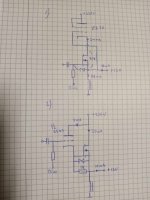
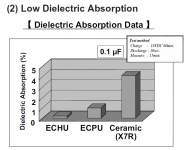
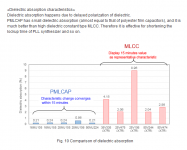
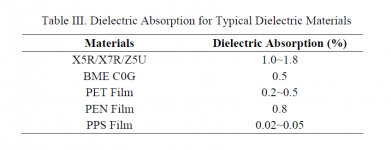
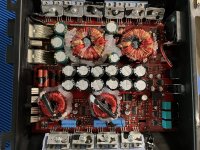
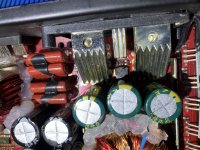
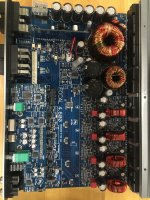
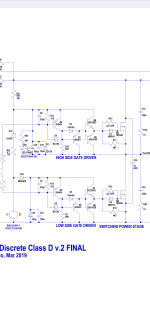
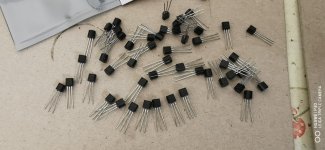
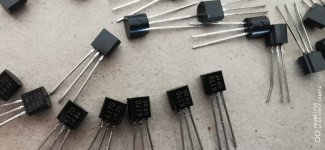
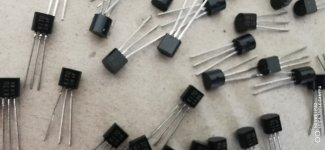
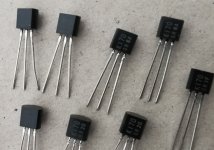
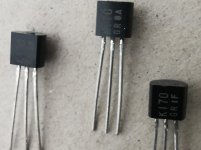
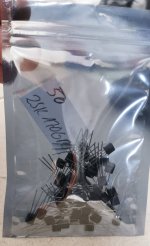
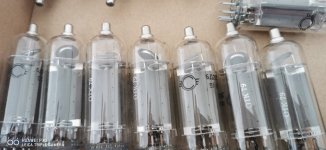
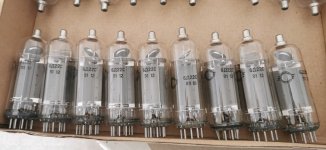
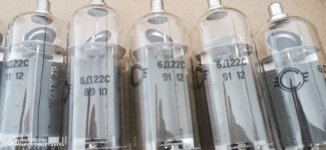
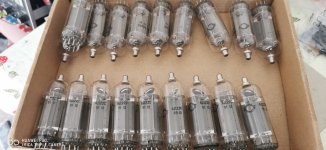

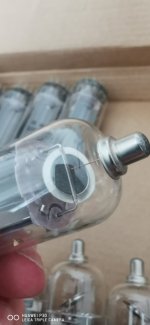
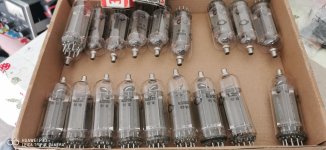
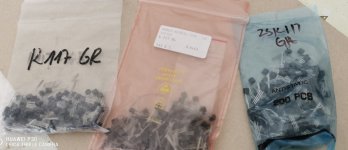
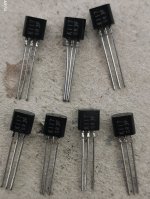
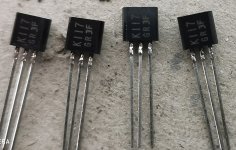
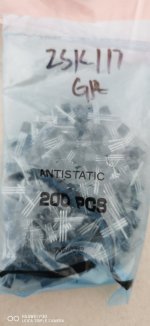
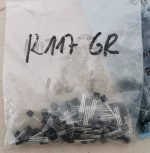
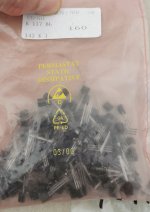
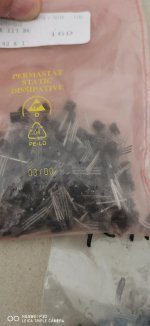
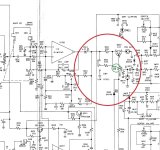
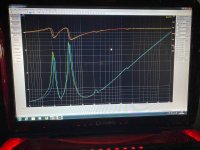
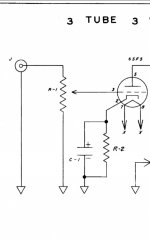
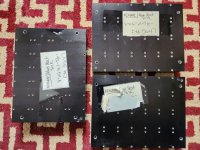
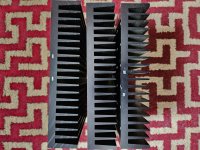
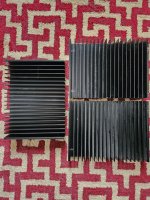
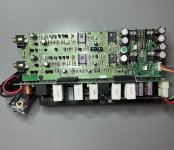
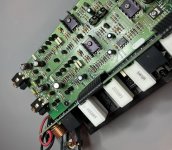
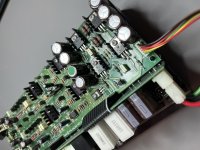

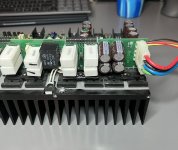
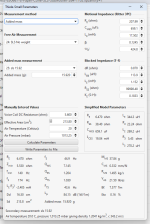
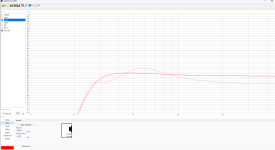
![20240615_061313[1].jpg 20240615_061313[1].jpg](https://www.diyaudio.com/community/data/attachments/1230/1230331-7749f363850d50b7429ecebeea2ccb01.jpg?hash=d0nzY4UNUL)
![20240615_063802[1].jpg 20240615_063802[1].jpg](https://www.diyaudio.com/community/data/attachments/1230/1230333-180860dd6a36c988ab867ff5dadf1959.jpg?hash=GAhg3Wo2yY)
![20240615_064104[1].jpg 20240615_064104[1].jpg](https://www.diyaudio.com/community/data/attachments/1230/1230342-c08e65331be996741129974f08d72c0e.jpg?hash=wI5lMxvpln)
![20240615_082954[1].jpg 20240615_082954[1].jpg](https://www.diyaudio.com/community/data/attachments/1230/1230366-230bf113077ad4186604385d398057c3.jpg?hash=IwvxEwd61B)
![20240614_215546[1].jpg 20240614_215546[1].jpg](https://www.diyaudio.com/community/data/attachments/1230/1230376-1c1e745df7f2e466bdb69a0c09f55cdf.jpg?hash=HB50Xffy5G)
![20240614_215947[1].jpg 20240614_215947[1].jpg](https://www.diyaudio.com/community/data/attachments/1230/1230378-e960e0c16dbbef0cec2b25fd3b0a2551.jpg?hash=6WDgwW277w)
![20240615_082558[1].jpg 20240615_082558[1].jpg](https://www.diyaudio.com/community/data/attachments/1230/1230379-6e98eca27e0adee62d4a01c1e91ff4bd.jpg?hash=bpjson4K3u)
![20240615_063825[1].jpg 20240615_063825[1].jpg](https://www.diyaudio.com/community/data/attachments/1230/1230385-096e1cbccd9ea13601001457b856af13.jpg?hash=CW4cvM2eoT)
![20240614_224040[1].jpg 20240614_224040[1].jpg](https://www.diyaudio.com/community/data/attachments/1230/1230388-eee41212464154b13be85bb181b40b98.jpg?hash=7uQSEkZBVL)
![20240614_224050[1].jpg 20240614_224050[1].jpg](https://www.diyaudio.com/community/data/attachments/1230/1230389-20861a7eec4a9f9190d8f9aa06fdc727.jpg?hash=IIYafuxKn5)
![20240615_064006[1].jpg 20240615_064006[1].jpg](https://www.diyaudio.com/community/data/attachments/1230/1230400-63a351e4340e9c5686399d1e7d5dd342.jpg?hash=Y6NR5DQOnF)
